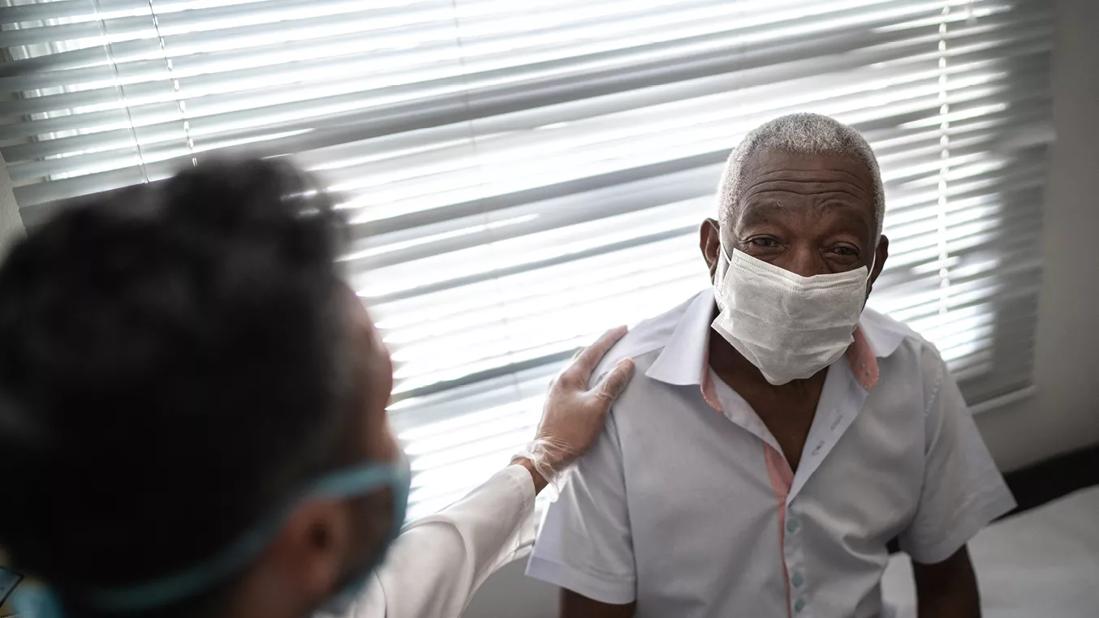Advertisement
Decision-making models improve Black patients' understanding of screening protocols

Racial disparities are a major issue in the detection and treatment of prostate cancer: The incidence of prostate cancer in Black men is 1.6 times higher than in Caucasian men. Compounding matters, the mortality rate is 2.4 times higher in Black men, who are often diagnosed with more advanced-stage prostate cancer and have lower rates of five-year survival. Health education, screening programs and culturally appropriate educational outreach are critical to addressing these troubling disparities. An integral part of the education process is empowering patients to make informed decisions about their healthcare.
Advertisement
Cleveland Clinic is a non-profit academic medical center. Advertising on our site helps support our mission. We do not endorse non-Cleveland Clinic products or services. Policy
Healthcare screening exams, including those for prostate cancer, rely on current decision-making models, which emphasize patient autonomy and self-determination. One such model, informed decision-making (IDM), entails providing patients with a thorough explanation of treatment options along with the risks, consequences and benefits of each. Another model that is getting increasing attention is shared decision-making (SDM), which encourages transparent interactions and collaboration between patients and providers.
Cleveland Clinic investigators found that education-based IDM led to a major improvement in Black patients’ understanding of prostate cancer and resulted in positive attitudes about the screening process. However, data is lacking on the relationship between SDM and prostate cancer screening in this population. To better understand how the two decision-making models compare, Cleveland Clinic investigators conducted a randomized, controlled trial in a large, high-risk Black population from areas with unfavorable health status, socioeconomic indicators and higher rates of prostate cancer than the national average. In particular, researchers examined participants’ knowledge of prostate cancer and their feelings about decision-making. The study is published in Cancer Investigation.
“At Cleveland Clinic, we are always looking for better ways to educate patients about their healthcare options to help them make informed decisions. This is especially important for Black men at risk for prostate cancer, who are particularly vulnerable to racial disparities,” says Samir Abraksia, MD, a hematologist/medical oncologist and Director of the Community Disparity Research program at Cleveland Clinic.
Advertisement
The study was conducted at the annual Men’s Health events held by the Cleveland Clinic Taussig Cancer Institute from 2017 to 2019. Significant community outreach was made to recruit men for the project, targeting an area of Cleveland with a predominantly Black population. The 179 study participants were randomized into IDM and SDM groups: 96 in the IDM (control) group and 79 in the SDM (investigational) group.
During the one-day events, an experienced Black provider delivered a PowerPoint presentation that covered prostate cancer features and risks, screening methods [prostate specific antigen (PSA) and digital rectal exam (DRE)], the natural history of prostate cancer and the risks and benefits of prostate cancer screening. The SDM group’s presentation also included a decision-support tool that asked in-depth questions to gauge participants’ attitudes about screening. Participants also received culturally appropriate educational materials developed by the research and outreach navigation program at Taussig.
After the presentation, patients older than 40 had the option to be screened with PSA and DRE, decline screening or say they were unsure. Screening was available on-site during the event or could be scheduled for a later time.
Both before and after the presentation, the participants took tests that assessed their knowledge of PCS. They also rated their comfort and satisfaction with their screening choices using the SURE decisional conflict scale and indicated whether they would have preferred to make their decision without receiving the educational intervention.
Advertisement
The two models were found to be comparable: The SDM group had 3/79 (3.9%) decisional conflict versus 6/96 (6.4%) in the IDM group. Eight-one percent (66/79) of subjects in the SDM group demonstrated an improvement in knowledge after receiving educational tools versus 79% (76/96) in the IDM group. No difference was found in the number (63%) of participants in either group who found the information helpful. Regarding screening, 86.46% of the IDM group and 87.34% of the SDM group chose screening.
“The results affirm that both decision-making models are feasible and deserve to be implemented. Since this study had a small number of participants, we plan to follow up with a much larger group for a more comprehensive comparison of the two approaches,” says Dr. Abraksia.
Notably, a large number of study participants reported a family history of prostate cancer. Future investigations will offer genetic testing, which may influence screening recommendations.
Advertisement
Advertisement

Obstructing key protein allows for increased treatment uptake for taxane chemotherapy

Oral medication reduces epistaxis and improves quality of life for patients with rare vascular disorder

Findings could help with management of a common, dose-limiting side effect

Enfortumab vedotin plus pembrolizumab benefited patients, regardless of biomarker expression

Treatment involved checkpoint inhibitor, surgery and intravesical therapy

Researchers Assess Real-Life Experiences of Patients Treated Outside of Clinical Trials

Multi-specialty coordination essential for improving quality of life